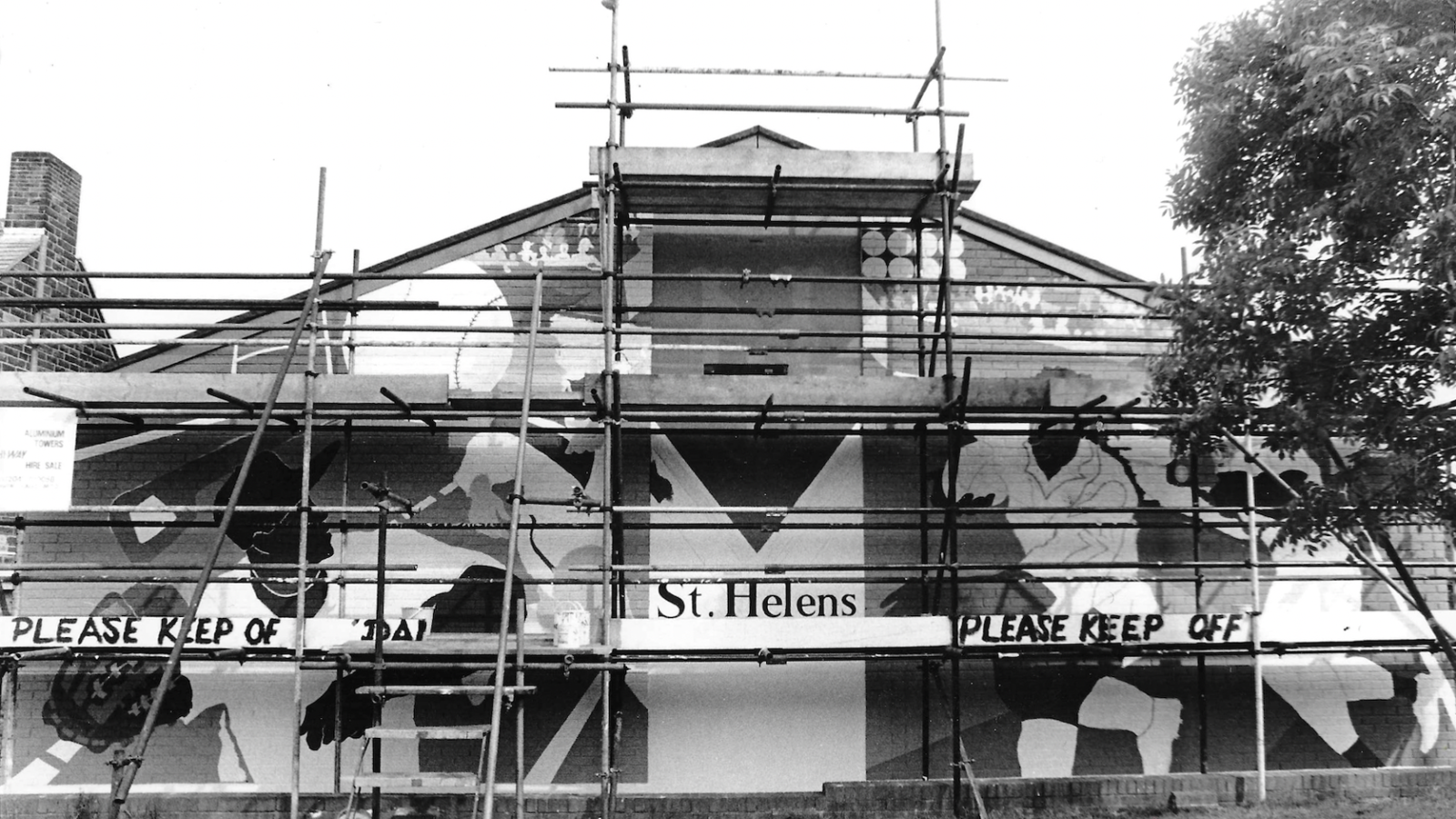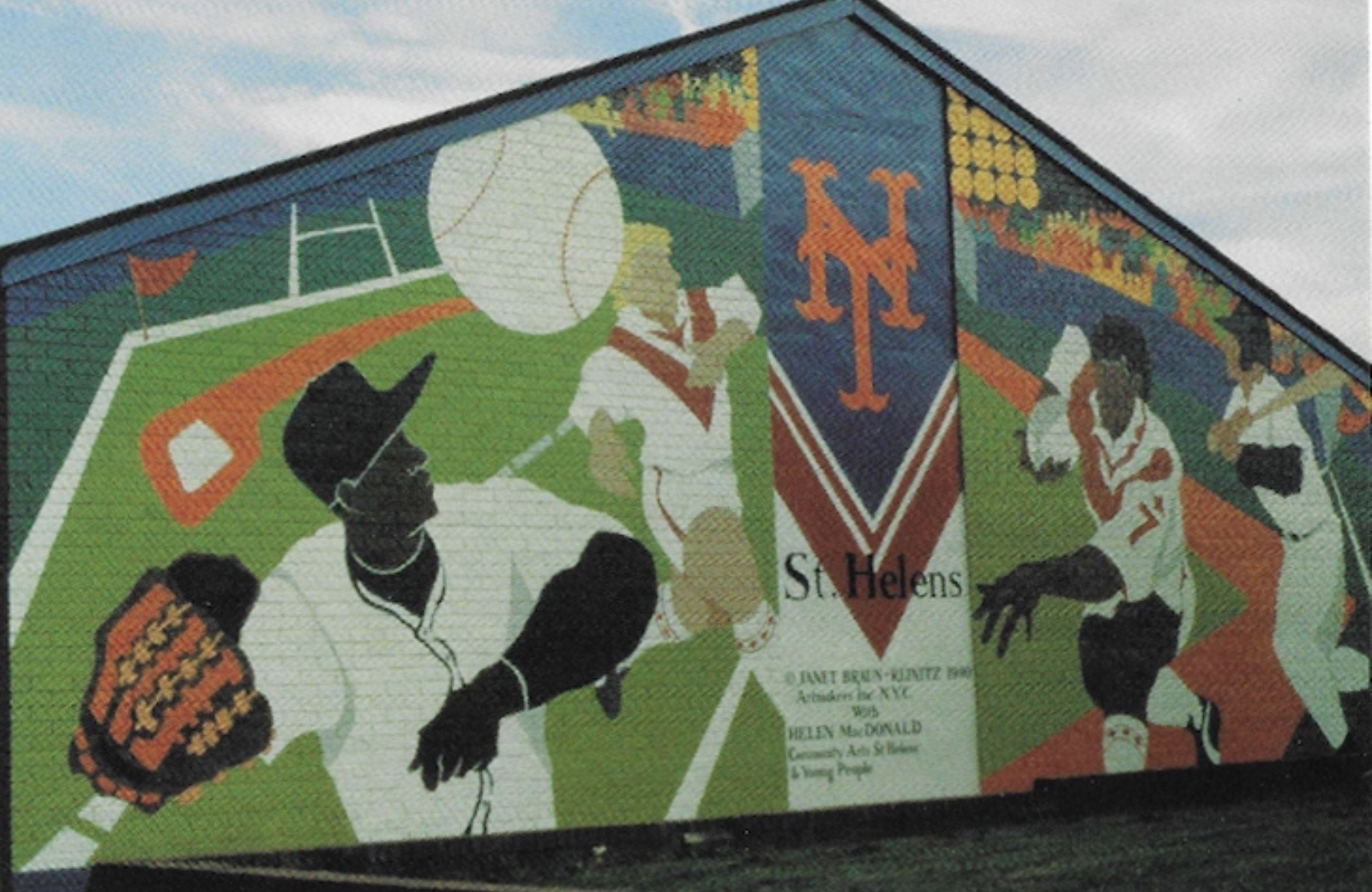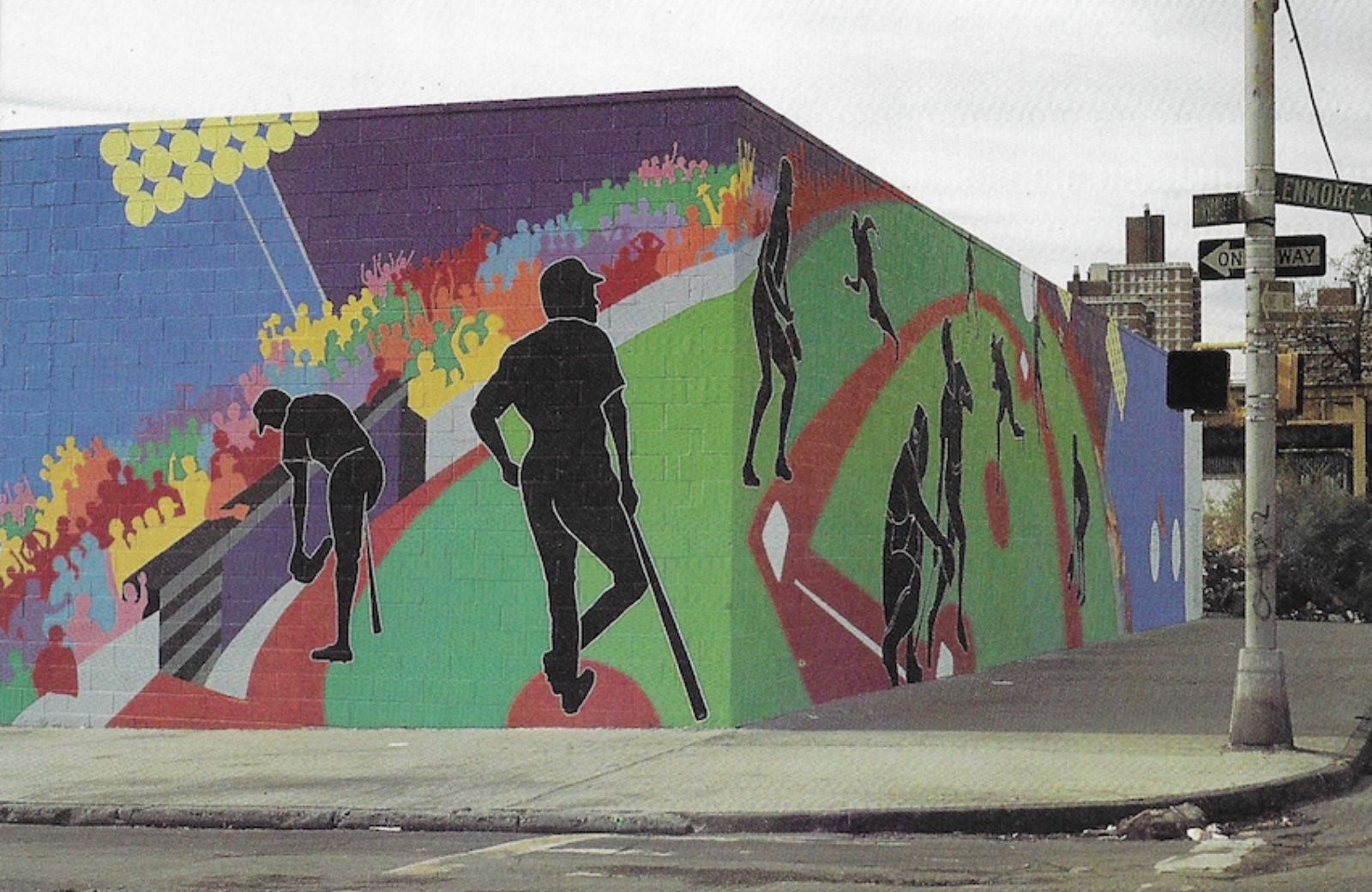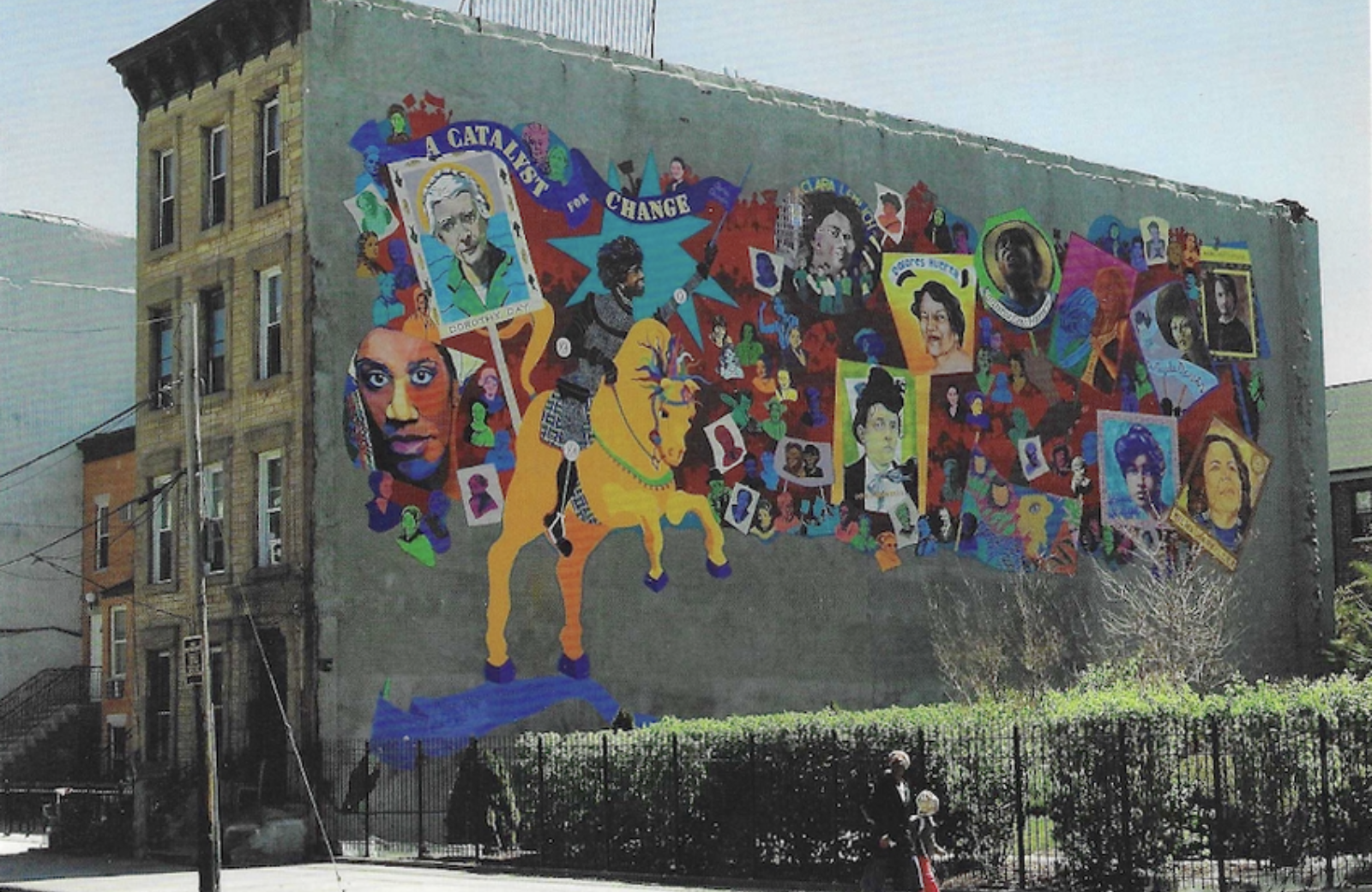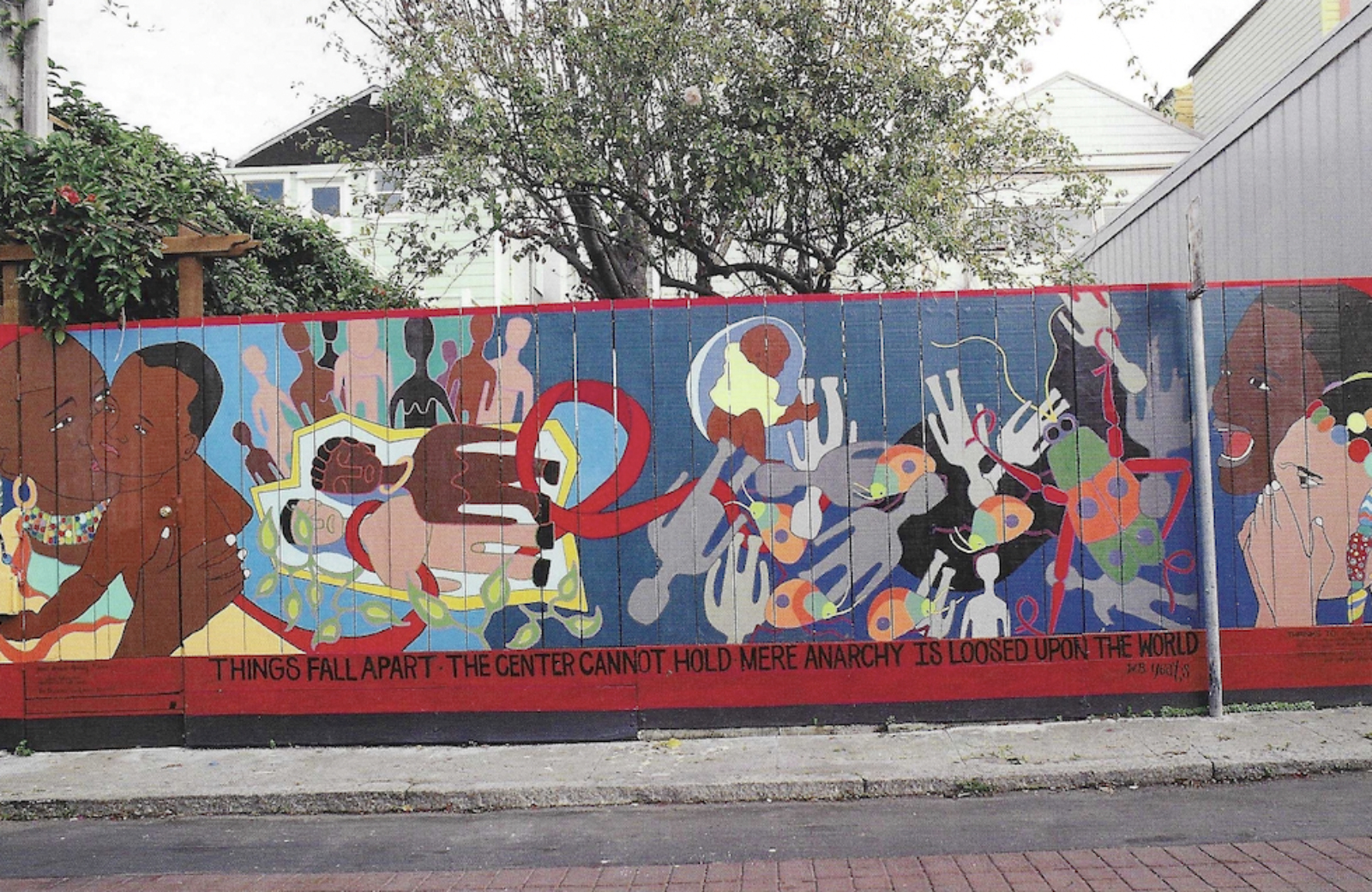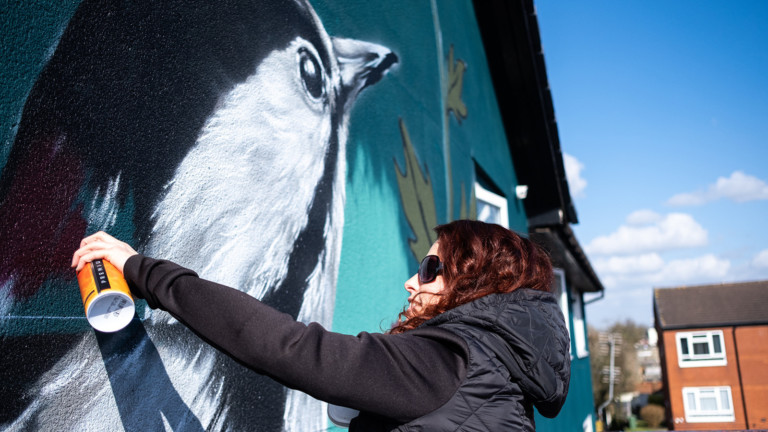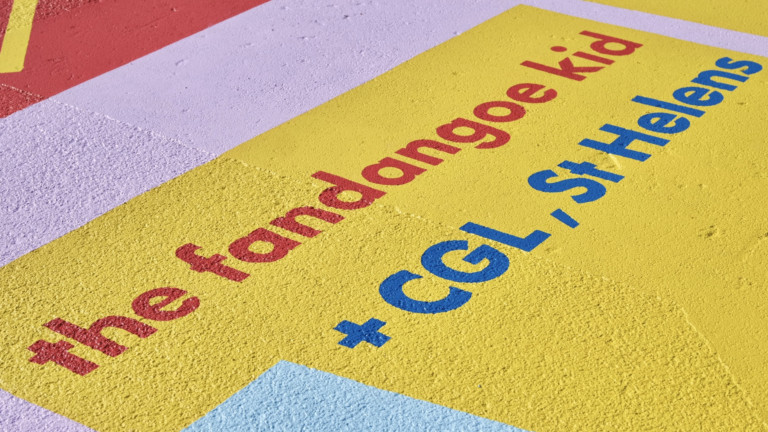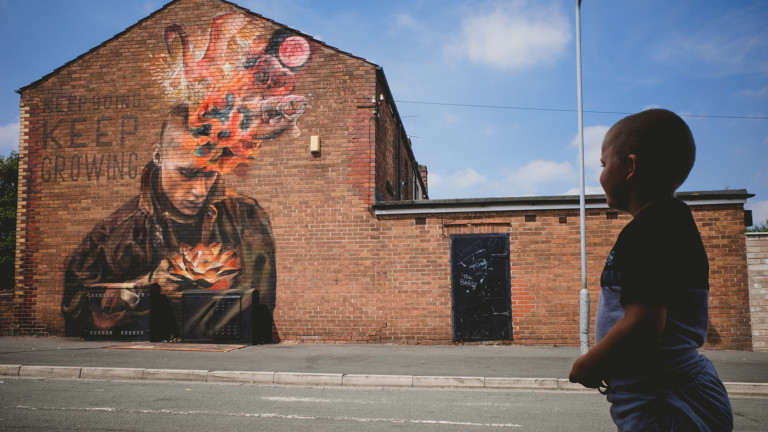Over the last year, Heart of Glass have unveiled murals across St Helens, bringing colour to the streets with the input of local communities. However, this isn’t the first time this has happened in the town. After noticing a recent campaign to spruce up a mural at Park Farm Community Centre, Carr Mill, that had become weathered over time, we began research to find out where the mural came from. Though conversations and online research revealed a treasure trove of information, there was one last missing piece - the artist who painted the mural.
Janet Braun-Reinitz, a member of the Freedom Rider movement in 1961, is internationally renowned for the murals she has painted across the world. On learning that she was the artist who designed and painted the Park Farm mural in 1991, we reached out over the internet to hear what she had to say.
Her first account is of the hospitality of St Helens, which still stands out in her memory over thirty years later.
"It was the most elegant situation I have ever painted in. I was so taken care of. It was amazing. First of all, there was a stair onto the scaffolding, which we now have everywhere, but in those days you climbed up. There was an inspector who came to make sure that the scaffold was up to standards. I remember the first morning, at about 10.30am someone said, 'it's time for a tea break'. And I said, 'Oh, I don’t drink tea, I drink coffee'. And from that day on, someone brought me a cup of coffee every single day at tea time."
We also spoke to Ste Littler, who was the Community Development Officer back then, asking if he felt that community art has changed over time. To invite an international artist to stay in the top room of a community centre feels like something that couldn’t happen now, particularly in the light of increased barriers to international travel and cuts to funding. He stated that the project was special at the time and that national press attention to the project tied it to contemporary conversations around whether street art could be considered high art.
Both first-person accounts from Ste and the documents that Janet sends across the Atlantic confirm that this mural was something to be excited about. One letter from John Sculley, the Community Arts Development Officer at the time, to Janet reads “We can’t make you rich, but we can make you famous”.
However, Janet’s expertise does shine a light on a stark difference to how many talk about community murals in the present day. Particularly in socially engaged artworks, there’s a focus on how a work is made, who made it, what the story is.
"I think for most people who look at art, they're interested in the narrative, as they should be. That's what's going to draw them in, the story. But whether it’s beautiful and well composed, will have to do with the formal issues. Should the green be so dark? Should that branch go up an inch higher? Most viewers don't have to think about it, but they're crucial for the artist. When you give a talk about your work, no one wants to hear why it works or why you chose that, they just want you to tell the story. And that's of course what murals do. But all work should tell the story as beautifully, as well thought through as possible."
Arguably, this expertise allows for increased participation from local people. Janet describes her memory of a young boy who used a wheelchair, who was lifted onto the scaffolding to take part in painting the wall. In the present day, though artists may design a mural alongside local people, health and safety concerns mean that the artist and other professionals are often the only ones who put paint to surface.
People physically changing the landscape around them, by co-designing and painting the walls of the place they live, is a distinctly political act. Though Janet’s work often responds to current events, such as the Bhopal chemical disaster, or threats to abortion rights in the USA, she describes that it can be challenging to balance this in her career with galleries who may refuse to show political work. Having a studio practice alongside painting public murals can act as a get-around without compromise.
"If the work is overtly political, there are places that just won't go near it, so I don't even apply to those shows. And then there are places that say oh my god, let's do this! A lot of galleries feel like political work won’t sell. And then political work by an old lady definitely won’t. We want someone who's under 30 so we can mastermind their careers and make lots of money."
The Park Farm mural was part of efforts to twin St Helens and New York’s the Bronx district. A newspaper cutting Janet sends reads:
"Janet’s visit is part of the cultural link-up between St Helens and New York’s Bronx district. The ‘twinning’ arrangement was established last Christmas when community arts development officer John Sculley visited the Big Apple and met Bronx officials.
The friendship was further cemented earlier this month when the Mayor, Councillor Mike Doyle, took part in a phone-in with his Bronx counterpart, Borough President Fernando Ferer - an event which was covered by several US TV channels and reported in the New York Times."
Disappointingly, many of these details have been lost over time, with scarce mentions of this huge project in the local archives or online. Much of what history remains is held in the memories of people who helped to paint the mural in the 90s.
On the side of Park Farm Community Centre, passers by can still see a St Helens rugby team and an American Baseball team playing alongside each other. Titled Saints Yankees Mural it was based on Home Run, a mural Janet had previously painted in Brooklyn, which caught the eye of John Sculley during an international visit.
Keen eyed observers on the Heart of Glass Facebook page noticed:
"It’s the New York Mets, not the Yankees. There is a picture you can find online of the mural when it was new and it says Saints/Yankees. But if you look at the logo on the mural, it’s definitely the Mets."
Janet is pleased someone noticed her secret, planted thirty years ago:
"Oh excellent! That was the big secret that we agreed on. St Helens was a sister city with the Bronx, which is one of the five boroughs of New York. The Bronx has an old and very distinguished baseball team. If you're in New York, you either don't care about baseball, you love the Yankees, or you hate the Yankees. And the mural was called Saints and Yankees, right? But the big NY logo? Is not the Yankees logo, it is my team's logo. It’s totally different colours. And the baseball figures I used were from my team. John knew I was going to do that. I said I would be delighted to do this. I will put Yankees in the title because that's the whole point because the sister cities, but I won't actually paint anything Yankee on there. And the logo, which is blue and orange, is the colours of the Mets. It is their logo."
But what to do with all this rich information? The Park Farm mural has undergone consultation to be painted over with a new design. Janet isn’t disappointed about this, and insists that after a mural is painted, it belongs to the community to do what they will with it in the future. Recently, a mural Janet painted in Greenfield was updated in 2017 to include a QR code that linked visitors to online research. Whatever the fate of the Park Farm mural, the spirit of street art lives on across the town.
This article was written by Grace Collins and commissioned by Heart of Glass.
